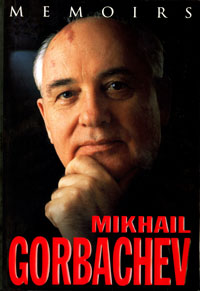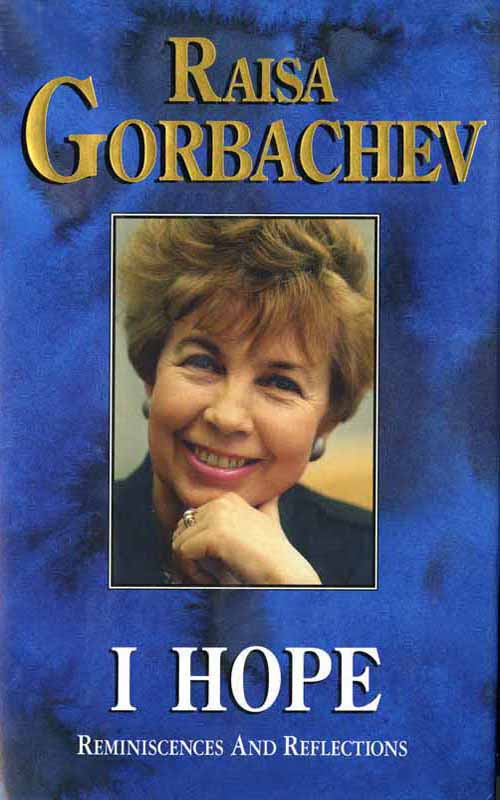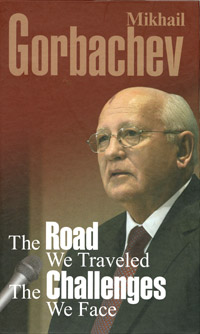16 March 2011
Mikhail Gorbachev. Chernobyl 25 years later: Many lessons learnedThe catastrophic accident in 1986 at the Chernobyl nuclear power station in Ukraine was one of the worst man-made disasters of the twentieth century. Two and a half decades later, the nuclear accident offers many lessons for preventing, managing, and recovering from such a horrible event, as well as specific lessons for the further development of nuclear power. I first heard of the Chernobyl nuclear reactor breakdown on the morning of April 26, when the Soviet Ministry of Medium Machine Building, responsible for nuclear reactors, reported it to the Kremlin. Though the seriousness of the incident remained unclear during our emergency Politburo meeting, a government commission headed by Boris Yevdokimovich Shcherbina, Deputy Chairman of the USSR Council of Ministers, was established and immediately dispatched to Chernobyl. This commission included scientists from the Soviet Academy of Sciences, nuclear reactor specialists, physicians, and radiologists. They met that evening with their counterparts from the Ukrainian Academy of Sciences. Initial reports were cautious in tone, and only on the following day, April 27, did we learn that an explosion had taken place at the nuclear power station, at least two people had been killed, and radioactive material had been released downwind. International media, however, had already started to speak about a radioactive cloud. We received more concrete information on April 28 and started informing the Soviet public of the serious nature of the disaster, focusing on efforts to manage the very dangerous and worsening situation. As efforts continued to contain the fire and radioactive releases, authorities began evacuating the local Soviet population. “The heart of the reactor—the hot radioactive core—is in suspension, as it were,” Soviet Academician Yevgeni Velikhov announced at the time. “It has been covered by a layer of sand, lead, boron, and clay, and this puts an additional load on the structure. Can it hold up or will it sink into the ground? No one has ever been in such a difficult position.” Within about 10 days the reactor fire and major radioactive releases were contained, but by then nuclear fallout had spread over three regions of the Soviet Union—Ukraine, Belarus, and Russia—most of Europe, and beyond. Thanks to the bravery of thousands of emergency workers, the number of victims and the proliferation of serious consequences were limited. Much long-term damage, however, had been done. Some 50 workers died fighting the fire and reactor core meltdown, and another 4,000 or more deaths may eventually be shown to have resulted from radioactive releases. The radiation dosage at the power plant during the accident has been estimated at over 20,000 roentgens per hour, about 40 times the estimated lethal dosage, and the World Health Organization identified 237 workers with Acute Radiation Sickness. Over 135,000 people were evacuated from the area, including the nearest town of Pripyat, immediately following the accident, and another 200,000 over the following months. The extent of the nuclear fallout was illustrated by the fact that, within only a few hours after the accident began on April 26, radiation alarms sounded at the Forsmark Nuclear Power Plant in Sweden, over 700 miles from Chernobyl. Today we know that about 77,000 square miles of territory in Europe and the former Soviet Union has been contaminated with radioactive fallout, leaving long-term challenges for flora, fauna, water, the environment, and human health. Tens of billions of dollars have already been spent in trying to contain and remediate the disaster, with a new containment shell now being constructed over the 1986 sarcophagus and what’s left of the reactor. We must continue to seriously examine the long-term public health and environmental consequences of the accident to better understand the relationship between radiation, both low- and high-level, and human life. The twenty-fifth anniversary of the Chernobyl accident is an important historic milestone to remind ourselves of this solemn duty. Furthermore, it is also the perfect time to address four key and related issues: PreventionFirst of all, it is vitally important to prevent any possibility of a repetition of the Chernobyl accident. This was a horrendous disaster because of the direct human cost, the large tracts of land poisoned, the scale of population displacement, the great loss of livelihoods, and the long-term trauma suffered by individuals yanked from their homeland and heritage. Victims of the tragedy were confronted by a crisis which they could scarcely understand and against which they had no defense. The material damage inflicted by Chernobyl, although enormous, pales in significance when compared to the ongoing human costs. The true scope of the tragedy still remains beyond comprehension and is a shocking reminder of the reality of the nuclear threat. It is also a striking symbol of modern technological risk.
Renewable energy
Access to affordable and safe energy is vital for economic development and poverty eradication. We cannot therefore simply reject nuclear energy today with many countries hugely dependent on this energy resource. But it is necessary to realize that nuclear power is not a panacea, as some observers allege, for energy sufficiency or climate change. Its cost-effectiveness is also exaggerated, as its real cost does not account for many hidden expenses. In the United States, for example, direct subsidies to nuclear energy amounted to 5 billion between 1947 and 1999, with an additional 5 billion in indirect subsidies. In contrast, subsidies to wind and solar energy combined over this same period totaled only .5 billion. To end the vicious cycle of “poverty versus safe environment,” the world must quickly transition to efficient, safe, and renewable energy, which will bring enormous economic, social, and environmental benefits. As the global population continues to expand, and the demand for energy production grows, we must invest in alternative and more sustainable sources of energy—wind, solar, geothermal, hydro—and widespread conservation and energy efficiency initiatives as safer, more efficient, and more affordable avenues for meeting both energy demands and conserving our fragile planet.
TransparencyThe closed nature and secrecy of the nuclear power industry, which had already experienced some 150 significant radiation leaks at nuclear power stations throughout the world before the Chernobyl fire, greatly contributed to the accident and response difficulties. We need full transparency and public oversight and regulation of the nuclear power industry today, along with complete emergency preparedness and response mechanisms. Previous SectionNext SectionVulnerability to terrorism and violence We especially must pay attention to keeping weapons and materials of mass destruction—in this case, nuclear weapons-grade materials such as high-enriched uranium and plutonium—out of the hands of terrorists and rogue nations. US President Barack Obama’s historic initiative to secure and eliminate all bomb-grade nuclear material in four years is an important step forward in improving global security, but we must not forget that these fissile materials are often used in nuclear power and research reactors. Let us all remember Chernobyl, not only for its negative impact on Ukraine, Belarus, Russia, and Europe, but also as a beacon of hope for a safer and more sustainable future. Previous Section Author biography |
|
The XXI century will be a сentury either of total all-embracing crisis or of moral and spiritual healing that will reinvigorate humankind. It is my conviction that all of us - all reasonable political leaders, all spiritual and ideological movements, all faiths - must help in this transition to a triumph of humanism and justice, in making the XXI century a century of a new human renaissance.
|
|
Русский |




